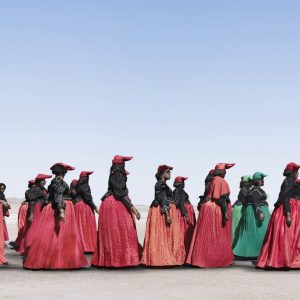
You know it’s going to be a good day at the office when you get an email that starts: “Hey, I’ve got a secret Brighton tip you might want to know about…” It turns out that Princess Omoba Aina of Africa wasn’t Queen Victoria’s only adopted child of ethnic minority who lived in my hometown of Brighton.
Thanks to this reader tip-off, we’re discovering the story of Princess Sophia Duleep Singh, a forgotten British royal of BAME origin, who swapped the world of fine dining, luxury travel and exclusive social circles for political female activism.

She was the most prominent woman of Indian heritage in the British suffragette movement, yet most of us haven’t heard of her, let alone of her connections to Brighton. This isn’t surprising, though, if a Google search of ‘leading suffragettes’, only turns up stories on her white counterpart, Emmeline Pankhurst. She wasn’t included in the 2015 film Suffragette, either, starring an all-white cast of leading ladies, despite being written and directed by women.

Sophia was the daughter of an exiled Indian Prince, Sikh Maharaja Duleep Singh, who was brought to England by Queen Victoria, under controversial circumstances. Against Victoria’s wishes, he married Bamba Muller, the illegitimate daughter of a German merchant and an enslaved Ethiopian princess and together they had six children.

Sophia spent her early childhood at Elvedon House in Suffolk where she lived the life of an aristocratic child. Exotic animals and birds roamed the gardens including golden pheasants, parrots, and peacocks. This fantasy childhood didn’t last, however. When her parents’ relationship broke down, her father eventually left to be with a mistress in Paris. 
Worse, her mother died shortly after. At this point, Queen Victoria sent the young princes and princesses to live in Brighton with a family called the Oliphants. During this time, the young princesses spent four days at a private school for young ladies on Dyke Road. At this point, it’s said Sophia threw herself into her academic lessons and tutorials. She learned to override her shyness and make polite conversation, never saying anything that might offend, but always having something to say.

After her education, she moved to Hampton Court Palace and lived like a Royal socialite. She went to all the parties and social events. She was featured in women’s magazines for her fashion, became one of the first women in England to ride a bicycle, and won the precursor to Crufts, with her Pomeranians beating those of the royal family.

It was a trip to India in 1903 which transformed her social outlook. For the first time in her life, she experienced racism. She saw famine and suffering at first hand, which she attributed to harsh colonial rule. The cry of the Indian nationalists of ‘Awaz doh’ (‘Give us a voice’) awoke in her a sense of passion. When she arrived back in England and heard the same cry coming from British suffragettes, who like the Indian nationalists, fighting for a say in their future.

She campaigned for votes for women nationally as well as locally, and sold The Suffragette newspaper outside Hampton Court Palace often. Her most significant involvement was on 18 November 1910, leading a 400-strong demonstration to parliament together with Emmeline Pankhurst. It’s since become known as ‘Black Friday’, for the violence that broke out which saw over 150 women physically assaulted.
The police pinned Sophia and Emmeline to a gate, forcing them to watch as fellow suffragettes were brutalised. Some were picked up and thrown back like rag dolls. Others had clothes ripped and were sexually taunted.”

As well as her work as a suffragette, she also belonged to the Women’s Tax Resistance League and refused to pay tax until she could have a vote. “When the women of England are enfranchised and the state acknowledges me as a citizen I shall, of course, pay my share willingly towards its upkeep.” This response led to plenty of headlines.

She returned to Brighton during the First World War as part of the 10,000-strong Women’s War Work Procession led by Emmeline Pankhurst in 1915. She visited and even nursed troops at Brighton Pavilion, used as a hospital for Indian soldiers for a time. It’s said she gave out mementoes including signed photographs and little ivory mirrors.

Despite making headlines at the time, her story lay dormant until 2015 when author Anita Anand published her biography, Sophia: Princess, Suffragette, Revolutionary. Since then, she’s been remembered on a stamp in 2018; in 2019, surveillance files compiled on her during the suffragette movement went on display for the first time at the British Library in a show exploring the history of the fight for women’s rights. You can also see her sari on display in the British Museum.
Thanks, Ryan, for the story tip.
New to Ellie & Co? Join thousands more and sign up for my monthly newsletter. Or follow my stories on Instagram, Twitter or Facebook.



